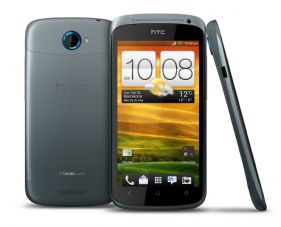HTC announced at the Mobile World Congress this year a new line of phones called the One Series. This consists of the One V, S, X and XL, in an ascending order of specs with the XL being a sort of in-between phone cum tablet much in the manner of the Samsung Galaxy Note.
HTC has been accused of putting out too many models in the past without significant differentiations, causing problems for carriers as well as customers. While that may or may not be the case, the One Series has pretty clear delineations in terms of processors and screen size to allow users to select the right device for them.
The reviewed model is the One S which comes in at a very light 119.5g, with overall dimensions of 130.9 x 65 x 7.8 mm, making it a very tidy model indeed. As this device runs Android 4, Ice Cream Sandwich (ICS), we’ll be using the Galaxy Nexus from Samsung and Google as the reference device for comparison, supplied and available from Vodafone. With the Galaxy Nexus weighing in at 135g and 135.5 x 67.9 x 8.9 mm, it makes the One S quite the svelte little package.
The build quality is immediately evident, sporting HTC’s new monocoque body in a satin black finish. It feels sturdy, yet light and comfortable to use.
The screen is a Super AMOLED capacitive touchscreen, with 16M colours, 110mm in size with 540 x 960 pixels. This makes it more than a match for competitors in the market and allows deep, rich colours to be displayed.
Over ICS is the usual HTC overlay, Sense which is now in version 4. Previously, HTC devices were often a bit Marmite in that you loved the heavy overlay or you didn’t. This time around, the overlay appears much more subtle and yet retains all of the benefits of previous versions, such as home screen pinch to view all screens.
Manipulating the screens, and indeed all interaction with the phone, is fluid and fast, belying the fact that the Qualcomm MSM8260A Snapdragon processor is but dual core, compared to the quad-core One X and XL. Performance overall is good, as the AnTuTu benchmark shows, the One S edging out the reference Galaxy Nexus devices by a few points, while being only marginally behind its stable mate the One X.
The Sense 4.0 overlay features a customisable launch bar that allows up to four apps to be pinned. The customisation features extend into other areas too, such as the ICS recent apps menu which is dressed up nicely over the standard ICS display on the Galaxy Nexus, with 3D cards for each app.
Perhaps the greatest single feature of the One S is the Beats Audio processing. This gives superior audio performance for either music or video, thought eh One S lacks the branded Beats Audio headphones that come with other One series devices. That said the supplied HTC ear buds performed well in a variety of tests from base heavy dance to classical and through to dirty, distorted guitars.
With all the bells and whistles one might expect from the latest version of Android, the One S is a very good device for anyone not looking for the biggest screen on a phone that will still fit in a pocket. The sheer quality of display on the One S and its overall performance means that it may be the top choice for a lot of people for whom a smart phone is more than a simple device but rather a companion. In that vein, the recent security, manageability and productivity enhancements of ICS make it a more business oriented device arguably than devices running Android Gingerbread or Honeycomb. With its mix of build size, quality, sturdiness, performance and ICS, the One S may be, as has been suggested elsewhere, the Goldilocks device for many.









Subscribers 0
Fans 0
Followers 0
Followers